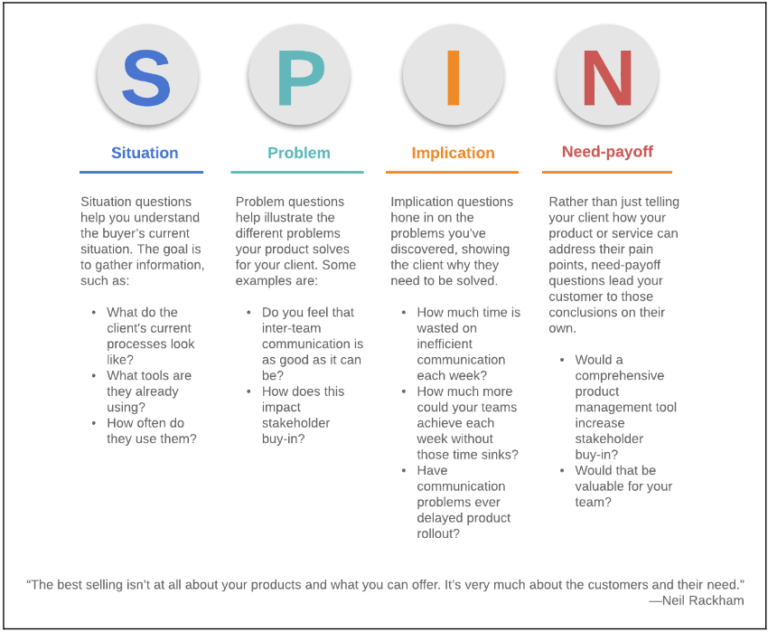Do you want to improve your sales by understanding customer issues? Pain points are your customers’ problems. Some customers may not be aware that they have a problem, but in order to market to them, your sales teams must be aware of potential pain points.
Top Pain Points
While every company is different, there are some universal pain points that you can identify regardless of the type of customer you’re targeting. Once you identify your customers’ issues, you will be able to position your product better to become their solution.

1. Money
Because businesses exist to make money, it is a top priority for any company. The question of return on investment (ROI) arises in every business decision.
When it comes to your customer’s pain points, this manifests in a variety of ways. When prospects say things like:
- We are cash-strapped.
- Our marketing budget was reduced.
- Profits are low despite good revenues.
If you hear these objections from a prospect, you need to use messaging that gives them hope for potential profits that exceed what they will spend on your product. The money objection stops a lot of inexperienced marketers and salespeople, but it’s all in the positioning.
2. Productivity
For many companies, lost time is a major source of frustration. Businesses experience pain when they are distracted from doing what they do best.
Business productivity objections can be:
- Our operating system is inefficient.
- We have far too many meetings.
- Basic functions require too much paperwork.
- Our cold outreach is cumbersome.
Positioning your solution to help save time will be a draw.

3. Human Resources
A business is built by the people who work for it. A company’s performance will suffer if it has trouble finding, developing, and retaining talent.
These pain points may be:
- We are unable to implement our ideal corporate culture.
- Attrition levels are high.
- We are not attracting the right talent because there is no training.
If your products solve these problems, you are on the road to a sale.
4. Problem Areas
Processes are essential to operations, but they’re not always streamlined.
Operational issues can be indicated by:
- Lost opportunities
- There is no communication between sales, marketing, and customer service.
- We are not maximizing customer lifetime value without an after-sale care process.
- Our cold emails aren’t linked to social outreach.
5. Pain-Point Support
Businesses are looking for tools to help them solve complex problems. They may have solutions to address pain points, but without support, they may not solve the problem.
Your prospect’s support pain points may include:
- We haven’t used it because we didn’t receive proper software training.
- Our employees haven’t received enough training to effectively use the product.
- When things go wrong, there’s no one to talk to.
- Fixing issues takes far too long.
- Our current service providers aren’t invested in our long-term success.
Customer service has declined, and companies won’t renew subscriptions or buy products without adequate support.
Finding Customer Pain Points
You must figure out what your prospects’ pain points are because they won’t always tell you (and they might not even know). Your ability to interact with customers can reveal business issues.
Customer Qualitative Research
Request information from your customers. Sometimes the old-fashioned method is superior to modern technology.
Give your customers the opportunity to workshop or sandbox in your environment. It’s a great way to work together to solve problems. People will gladly participate if you offer your expertise.

Open Conversations, Not Sales Pitches
To obtain information, ask the right questions. You can’t do it if your salespeople deliver a rote pitch.
Instead, engage in an open dialogue in which your questions assist the customer in identifying pain points. SPIN selling can assist you in understanding the customer’s pain points and resolving their issues.

Learn From Sales Reps
What kind of feedback are your salespeople getting from prospects? Investigate what’s happening on sales calls. Deals that fall through can sometimes provide more information about your product, marketing, and processes than a closed deal.
- Why do promising leads fizzle?
- What don’t you offer that they want?
- What item sells the most?
Make sure you’re not only addressing your sales team’s pain points (such as a lack of qualified leads) but also those of your customers.
Review
We appreciate positive feedback, but negative feedback is equally valuable.
Negative feedback is never fun, but it can show you where you need to improve. Use social feedback effectively as part of your marketing strategy.
Examples of Pain Point Questions
Asking the right questions is essential for gathering information. Ask the following questions for each source of pain:
Financial
What is preventing your company from expanding?
What is the status of your marketing budget?
Are your solutions cost-effective?
Productivity
What are the areas where you have the most kinks?
Do you waste time because your CRM and email outreach aren’t integrated?
Is your current provider’s downtime causing you to waste time?
People
Do you frequently need to replace good employees?
Are you able to adequately train your employees?
Can you attract top talent?
Process
Do you use several programs to complete simple tasks?
Are your sales and marketing teams following the same script?
Do you keep hearing about certain processes at all-company meetings because you’re not maximizing them?
Support
Do problems get solved quickly?
Is your service provider assisting your company in getting the most out of the product?
Do you have a good system in place for onboarding new employees?
How Marketing Can Use Pain Points to Help Salespeople
Experienced marketers work with every resource they have to determine the pain points that will engage their ideal targets. Without this precise targeting, sales may get leads, but the quality will be inconsistent.
Here are some ways to reach them.

Identifying Key Stakeholders And Decision-Makers
It’s not enough to target your marketing efforts at the broad demographics you desire. Marketers need to determine who within the organization is the first person looking for a solution. Businesses frequently target decision makers directly, when someone more junior may be the initial contact and information gatherer.
This is why everyone makes such a big deal about understanding your customer’s journey.
Short Surveys
Business websites can use pop-ups in ways other than conversions. Short, simple interest surveys engage your visitors and provide you with information you can use to target their interests and needs.
You can also include these types of surveys in your emails.
Use Social Proof
Social proof is one of the most powerful motivators when it comes to purchasing decisions, so it must be a part of what you do. Display logos of well-known clients, testimonials and reviews, and un-gated case studies on your website.
Customers are more likely to become clients if they know that others are happy to work with you.
Change Messaging Through the Customer Journey
The information that customers require changes as they progress through their decision-making process. Your messaging and calls-to-action need to reflect these changes.
Someone conducting early-stage research on solutions requires different information than someone comparing vendor solutions.
Conclusion
People buy products or services to solve their problems and gain more of what will help them succeed.
If your marketers and salespeople can pinpoint those pain points, they will have a much better chance of closing the deal. Respecting the needs of the customer as they learn will go a long way.
While each business is unique, the problems they face tend to boil down to five key points: money, productivity, people, process, and support.
Position your products and services accordingly, and you will not only close more sales, but you will also retain these customers longer.

